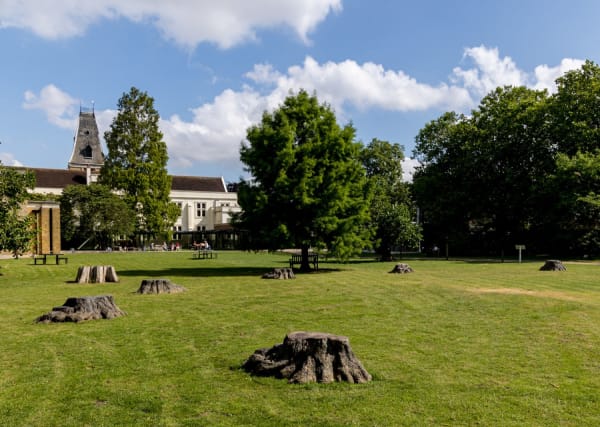Bronze Oak Grove
Bronze Oak Grove is a welcoming, inclusive addition to the gardens this summer – an artwork you can walk around, sit on, interact with, a place to relax, think and play. The public are actively encouraged to engage with the work to bring it alive and participate in the creative process.
For a number of years, the Carters have been inspired by the work of Jacob de Gheyn II (1565–1629), a draughtsman, painter and engraver who was a contemporary of Rembrandt during the Dutch golden age. De Gheyn's work marks the transition from late 16th-century Mannerism to the more naturalistic style of the early 17th century and he was recognised as a giant in his time, though little known today. The Carters’ Oak Grove consists of nine identical tree stumps, fabricated in bronze, which take as their starting point De Gheyn’s botanical drawing from 1600.
Throughout history the oak tree has been held in high esteem and is considered the most venerated tree in European culture. Dense forests of oak once covered most of Northern Europe and in those days the oak was held most sacred. Oak groves were used as pagan places of worship and the oak, used in a combination of rituals with certain spells, was considered a sure charm against witchery. People prized the oak for its curative powers - its wood was used for building, its branches for fuel, its acorns for food and its leaves to promote healing. Famed for its endurance and longevity, it is synonymous with strength and steadfastness.
With their Bronze Oak Grove, the Carters emphasise the strong association between human civilisations and oaks, and create a contemporary space for gathering and dialogue.




